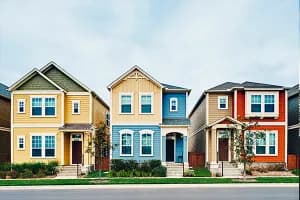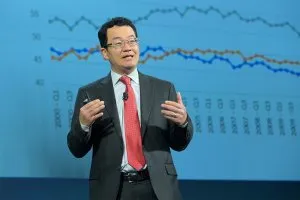by Rob Warmowski, Contributing Writer
Marketing, owning, or managing commercial properties of all sizes and purposes increasingly means making a big picture out of lots of small measurements.
The technology race is on to provide hardware and software that takes and stores those measurements, letting us make sense of the piles of data collected. Naturally, these instruments are linked via internet. What the wider world calls the Internet of Things (IoT) has arrived in commercial property management, bringing with it a vocabulary all its own.
IoT in our industry mostly encompasses two types of devices. First it means sensors, dedicated to measuring commercial property temperature, foot traffic, space utilization, inventory, and almost any other metric of interest. IoT also means controls such as thermostats, smart light switches and security and access management. IoT lets us talk to the building just as much as it lets the building talk to us.
The IoT offerings in the commercial property management space revolve around doctrines of flexibility and customization. Solutions are assembled using pieces of off-the-shelf hardware and customized software put together to tightly fit the monitoring and control needs that change significantly with every commercial property. The technology industry promises its real estate IoT customers a future with more streamlining and wide interoperability, but it’s wise to maintain healthy skepticism about these assurances. It’s better to learn the IoT concepts first, then look for ways IoT can be made to ft your property management needs.
THE COMMERCIAL REAL ESTATE IoT GLOSSARY:
3G/4G: The third and fourth generation of wireless, wide area communications technology. What your smart phone’s data plan probably uses. Often used in commercial real estate IoT as links between buildings as opposed to links between rooms or floors.
Actuator: A device that takes a sensor signal and produces a physical action, such as the locking or unlocking of a door.
Accelerometer: Measures human activities, such as walking, across some defined zone, such as a hallway floor or walkway. A way to accumulate accurate foot traffic numbers.
BCIA: Building Controls Industry Association. https://bcia.co.uk/
BMS: Building Management Systems. A name for one type of IoT implementation for building management.
Buffer Overflow: Any internet connected device’s software can be susceptible to “biting off more than it can chew” when it comes to data arriving into a device. Buffer overflow in IoT represents a device’s potential point of failure or security breach due to processing too much data.
Cloud: Somebody else’s computer(s).
Computer Vision: Using connected cameras to obtain images for processing and understanding building usage patterns.DAQ: Where industrial controls technology and commercial real estate operations meet is the Data Acquisition Module (DAQ). The DAQ is a specialized hardware nerve center that sensors of all types are connected to via internet protocols. Most buildings will have a DAQ responsible for collecting data.
Data analytics: Making sense of the data collected resulting from running many IoT devices.
Embedded: Within a larger hardware system, one might fnd embedded building sensors or actuators. Embedding puts computer function into floors, walls and ceilings rather than on a computer located, say, in a basement, or off-site.
Environmental Sensing: Sensors measuring qualities such as air or water quality.
Ethernet: A very common means of local-area connection, connecting IoT devices via hardware.
Fiber: (Fiber optic). High-speed, high-capacity data networking cable. Used typically between buildings or by internet service providers.
Firmware: Permanent software in a hardware device.
Flash Upgrade: A way to update firmware.
FPGA: Field-programmable gate array. A type of hardware dedicated to large and rapid processing of data, such as might emit from cameras in a computer vision system. Integration: IoT’s primary goal is the integration of the physical world of a commercial property with computing infrastructure plus data collection.
IoT-GSI: International technical standards body for IoT. http://www.itu.int/
IoT Gateway: Dedicated hardware. When a building’s devices send data outside the building, an IoT gateway is often used to aggregate the data streams.
Intelligent shopping: an example IoT application whereby a customer’s IoT-enabled refrigerator takes inventory and messages the customer’s smart phone the shelf location of needed items in a supermarket.
IP Address: Enabling the IoT is the recent technical standard of internet protocol (IP) version 6 (IPv6), which allows for the simultaneous existence of a monstrously huge number of devices. The older IPv4 allows for only four billion addresses.
ISA: International Society of Automation http://www.isa.org/
Lab View: A proprietary software development tool for creating customized data collection systems. Machine Learning: A computing technique that reads large quantities of data and finds patterns therein; can be used to improve efficiency in water, power, telecom, HVAC, etc.
Metadata: Data about data. Smart thermostats collect data every x minutes. Averages of temperature over a 24-hour period are calculated later; these averages are an example of metadata.
Nest: A very popular smart thermostat vendor. Acquired by Google for $3.2 billion in 2014.
Sampling: Continuous streams of sensor data may not all be saved for processing. Instead, a fraction of data readings may be read and processed. Tis process is called sampling.
Sensor: Cameras, thermometers, accelerometers, water, or power meters are all examples of sensors.
Smart Grid: Name for wide-area electrical power distribution network that includes digital communications signals describing usage.
Submetering: Allowing a property owner or manager to meter individual tenants’ usage of resources.
Real Time: Processing sensor data at the time it is being created or read is called real-time processing. Processing data later is called batch processing.
Transducer: Sensor that detects changes in a physical property or quantity (footfalls, brightness, air pressure) into a signal for collection.
SOC: System on a chip: see embedding.
Wi-Fi: A very common local-area networking technology. Typically used for rooms and near areas only. WiFi might cheaply interconnect sensors to a gateway or to each other.








